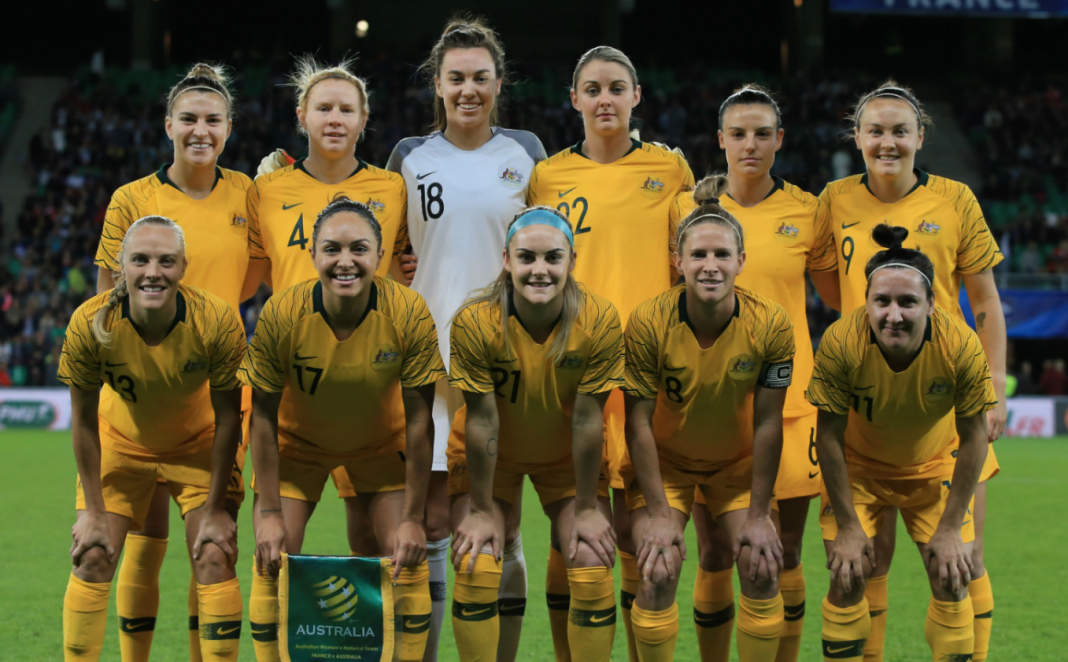
Throughout the history of the W-League, as in other leagues of all sports around the world, there has been a constant perception that teams boasting the largest number of homegrown national team players have a distinct advantage of success.
While this tends to ring true for major European clubs such as Lyon, Bayern Munich, Atletico Madrid, and Juventus, these teams are able to lure players from other clubs with the promise of better wages or facilities.
It’s well-known that the W-League operates under a salary cap, a system designed to promote parity and spread talent across the league; however, few teams in Australia choose to – or perhaps are able to – spend the full amount of $300,000 made available.
Because of this, there is always the possibility of national team players moving from club to club in search of more playing time or better opportunities. Canberra United fans discovered recently that their only regularly-starting Matildas player – Ellie Carpenter – will not be returning for season 2019-20, while Newcastle will be without Matildas mainstay Emily van Egmond this season, and have only recently announced Gema Simon’s re-signing. Melbourne Victory won the 2018-19 premiership with only two Matildas in the squad – Emily Gielnik and Laura Alleway – while Sydney FC and Melbourne City were last season blessed with five each.
In contrast, the American NWSL has an allocation system for US women’s national team players – in which national team players are exempt from the salary cap – but also has a college draft system feeding the competition.
The question remains: does the ‘clumping’ of Matildas in recent years in teams such as Sydney FC, Melbourne City, and Brisbane Roar translate to W-League success? Are teams stacked with experienced national team players more likely to claim the premiership in any given season?
Premiers
| Season | Premiership Club | Number of Matildas | Club with most Matildas |
| 2008-2009 | Queensland Roar* | 11 | Queensland Roar (11) |
| 2009 | Sydney FC | 7 | Sydney FC (7) |
| 2010-2011 | Sydney FC | 8 | Brisbane Roar, Sydney FC (8) |
| 2011-2012 | Canberra United | 8 | Sydney FC (11) |
| 2012-2013 | Brisbane Roar | 9 | Brisbane Roar (9) |
| 2013-2014 | Canberra United | 3 | Brisbane Roar (10) |
| 2014 | Perth Glory | 6 | Brisbane Roar (7) |
| 2015-2016 | Melbourne City | 4 | Brisbane Roar, Canberra United, Sydney FC, Melbourne City (4) |
| 2016-2017 | Canberra United | 3 | Brisbane Roar (5) |
| 2017-2018 | Brisbane Roar | 6 | Sydney FC (7) |
| 2018-2019 | Melbourne Victory | 2 | Sydney FC (6) |
*renamed Brisbane Roar in later seasons
(NB: All figures from Andrew Howe and Greg Werner’s “Encyclopedia of Matildas”, Fairplay Publishing, 2019. The author of this article is a proud owner of this book).
Throughout the early years of the W-League, teams littered with Matildas players hoarded trophies between them. However, the statistic that immediately jumps out from the above table is Canberra United’s 2013-14 season, with a whopping seven Matildas fewer than Brisbane.
While Canberra has continued to produce quality youngsters throughout the competition, their premiership success in 2013-14 is perhaps not that surprising when you realise their three Matildas players were two of the finest goal-scorers in the land in Michelle Heyman and Ashleigh Sykes, and first-choice goalkeeper Lydia Williams.
Similarly, Melbourne Victory’s 2018-19 premiership with only two Matildas is also striking, with Alleway and Gielnik surging into form as the season progressed, both eventually earning call-ups to the Matildas World Cup squad.
Also notable is a trend towards the impact of groupings of Matildas lessening in recent years, specifically since season 2013-14, perhaps reflecting the greater influence of international players in the competition since then.
Season 2015-16 was the closest to resembling a US-style national team player allocation system, with four teams having four Matildas each. Newcastle and Perth also fielded three Matildas that year, while Western Sydney Wanderers fielded two.
Wooden spooners
| Season | Club | Number of Matildas | Club with fewest Matildas |
| 2008-2009 | Adelaide United | 2 | Melbourne Victory (1) |
| 2009 | Newcastle Jets | 0 | Newcastle Jets, Adelaide United (0) |
| 2010-2011 | Adelaide United | 0 | Adelaide United (0) |
| 2011-2012 | Adelaide United | 0 | Adelaide United, Perth Glory (0) |
| 2012-2013 | Adelaide United | 1 | Adelaide United, Newcastle Jets (1) |
| 2013-2014 | Newcastle Jets | 3 | Adelaide United (0) |
| 2014 | Western Sydney Wanderers | 0 | Western Sydney Wanderers (0) |
| 2015-2016 | Melbourne Victory | 1 | Melbourne Victory (1) |
| 2016-2017 | Melbourne Victory | 0 | Melbourne Victory (0) |
| 2017-2018 | Adelaide United | 3 | Melbourne Victory, Perth Glory, Western Sydney Wanderers (0) |
| 2018-2019 | Western Sydney Wanderers | 0 | Western Sydney Wanderers (0) |
While the former table shows that in recent years having lots of Matildas won’t necessarily guarantee you a premiership, the latter seems to illustrate the protective powers of Matildas in the squad in fending off the wooden spoon. There were only three seasons where a team finishing last had more than the fewest number of Matildas in the competition.
What do these results indicate may happen if a US-style allocation system were introduced in the W-League? It would seem that the teams at the bottom end of the ladder will benefit most, making for a closer competition and better spectacles for spectators and viewers.
Perhaps the biggest take-away from this analysis is this: don’t fret too much if your favourite team has fewer Matildas than others. History shows that, especially as the W-League has progressed, a large Matildas contingent is not a gateway to premiership success, while even a small number of national team stars can help your club avoid the dreaded wooden spoon.






